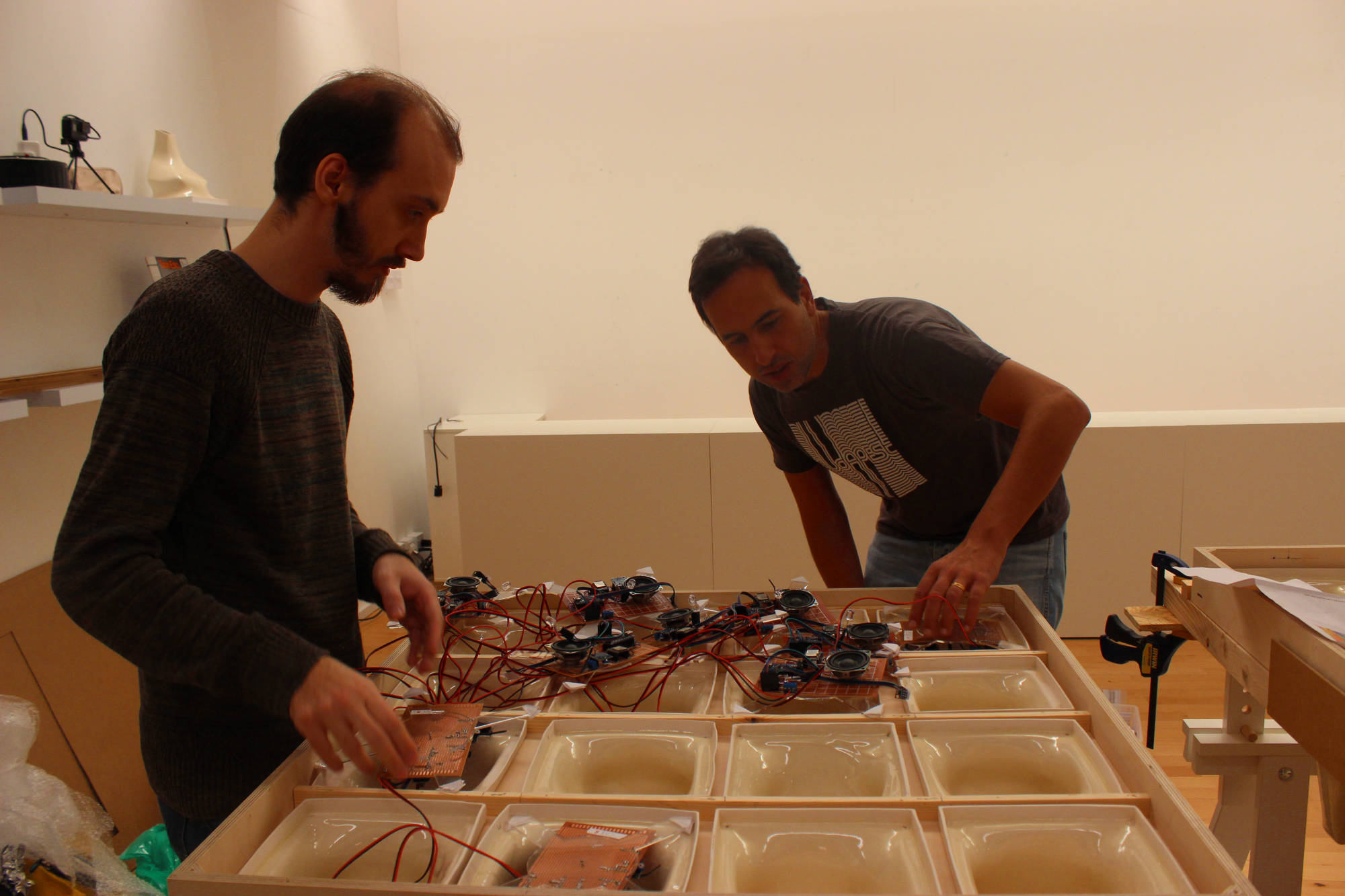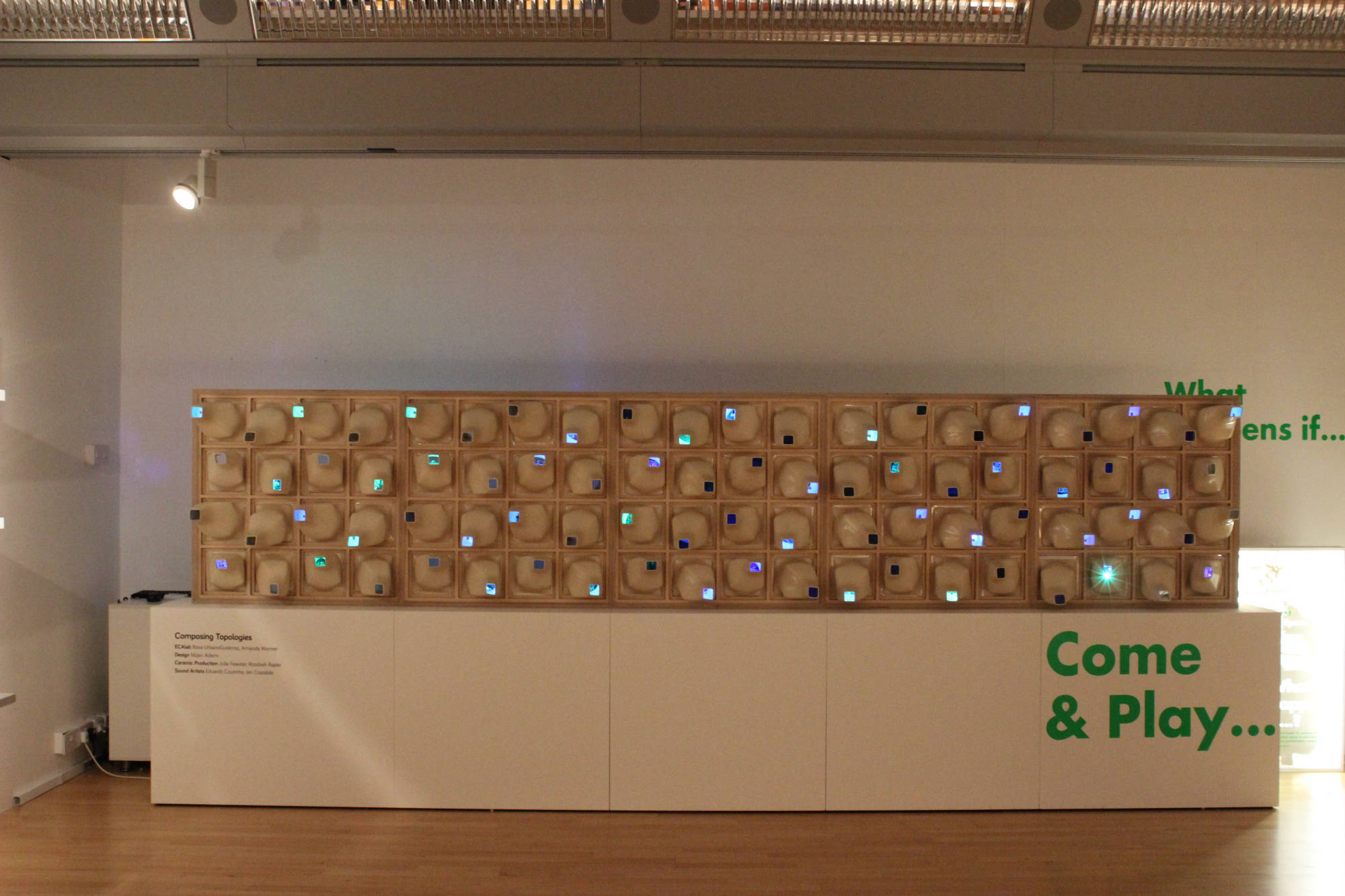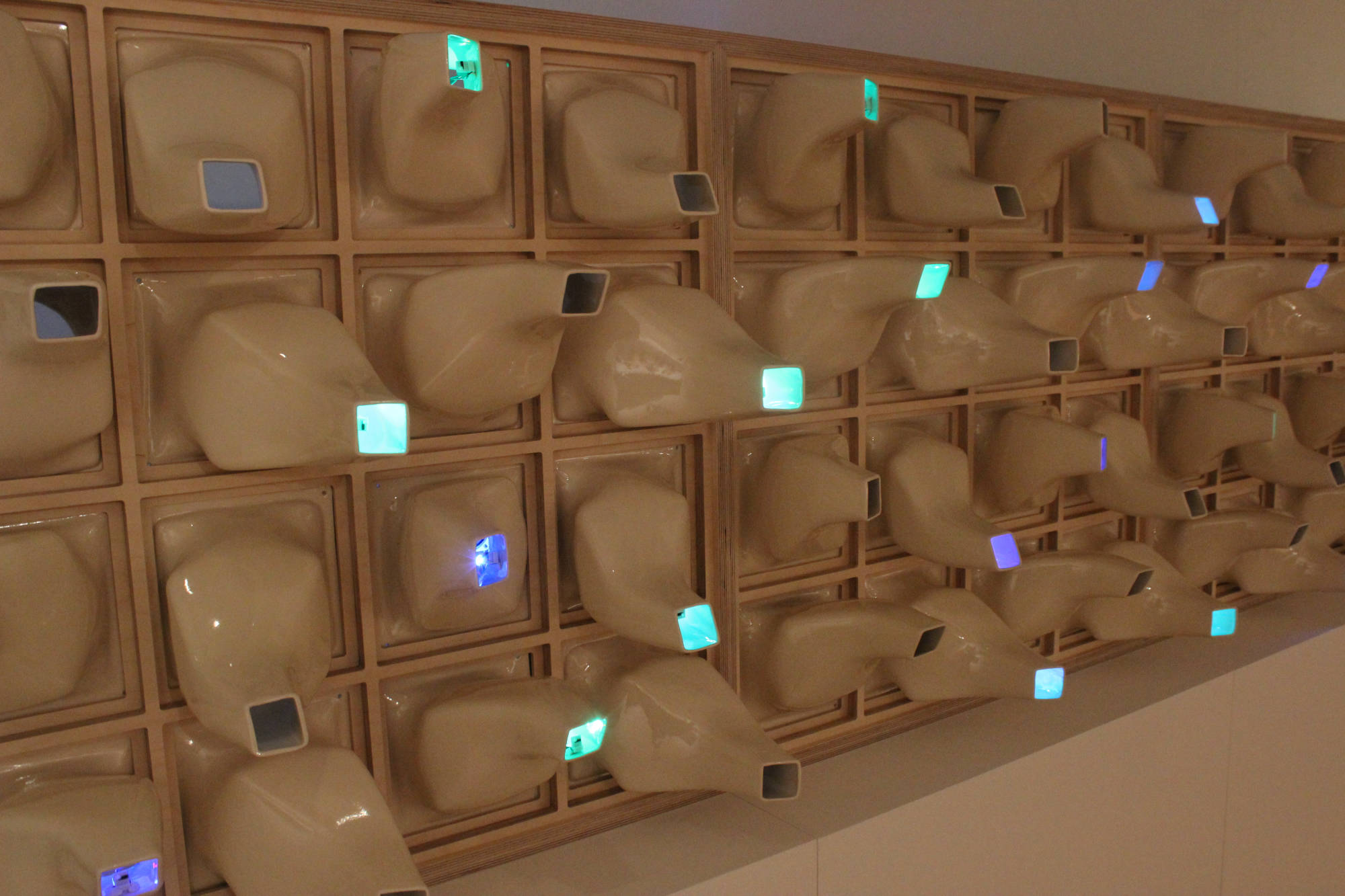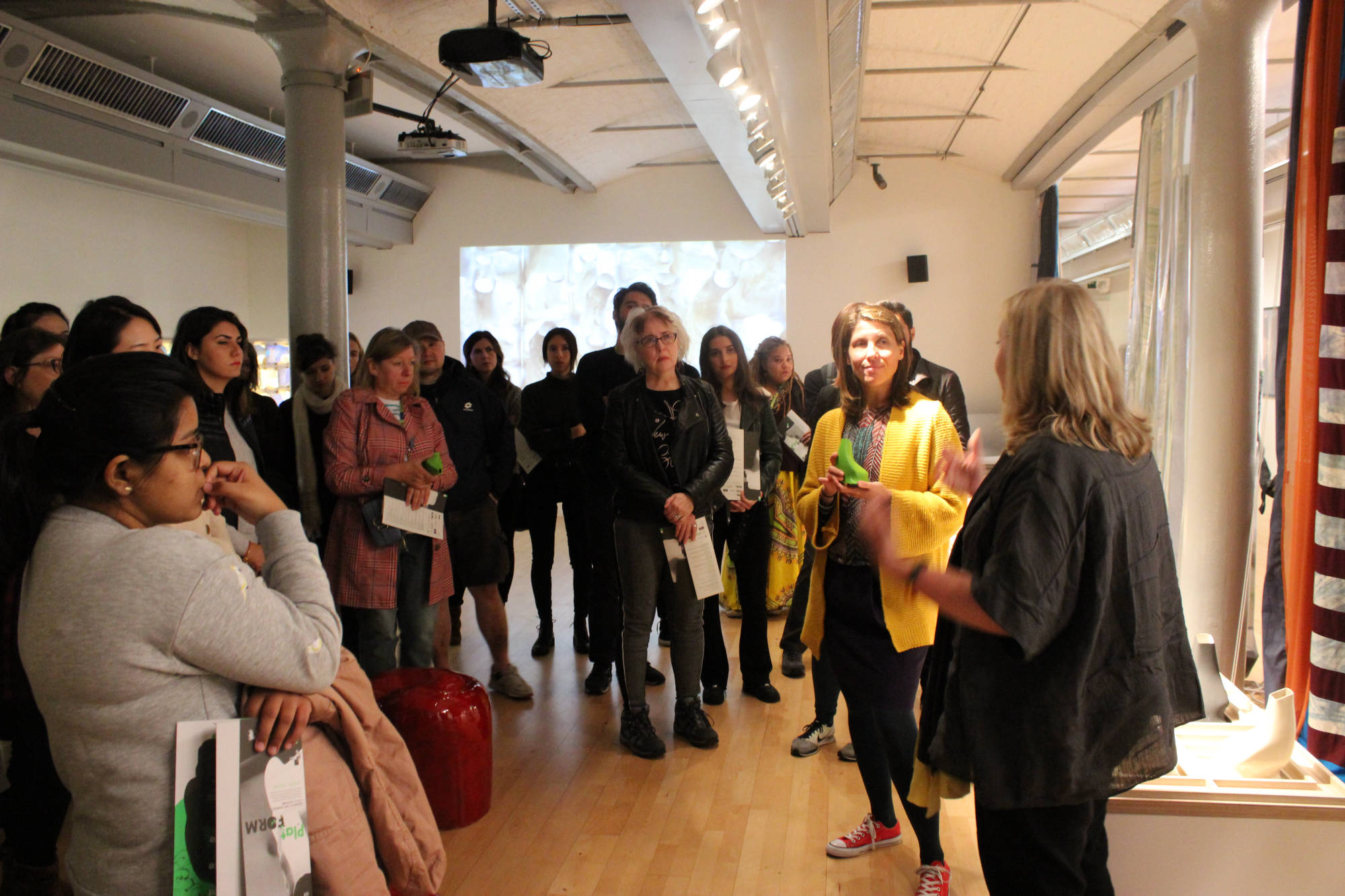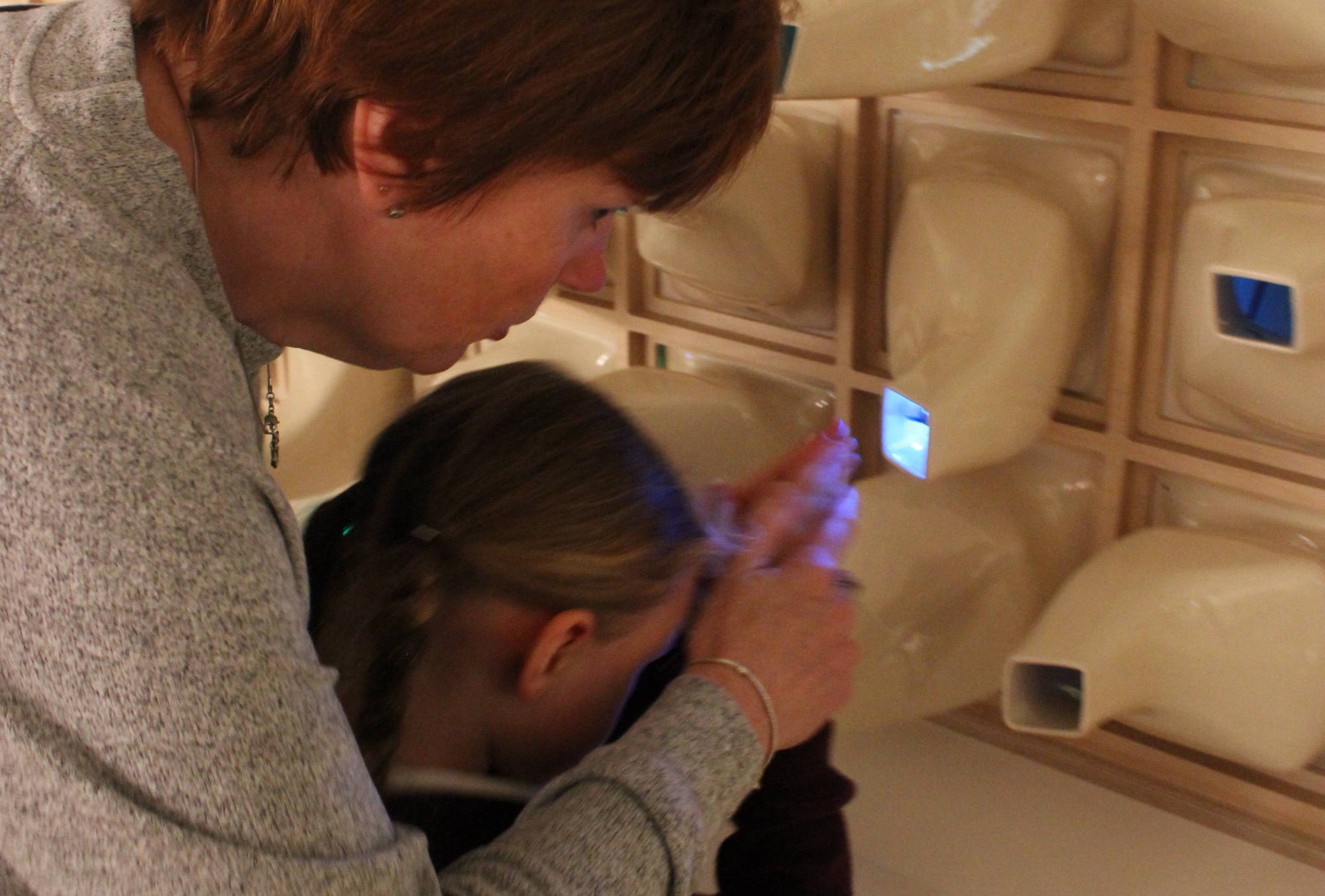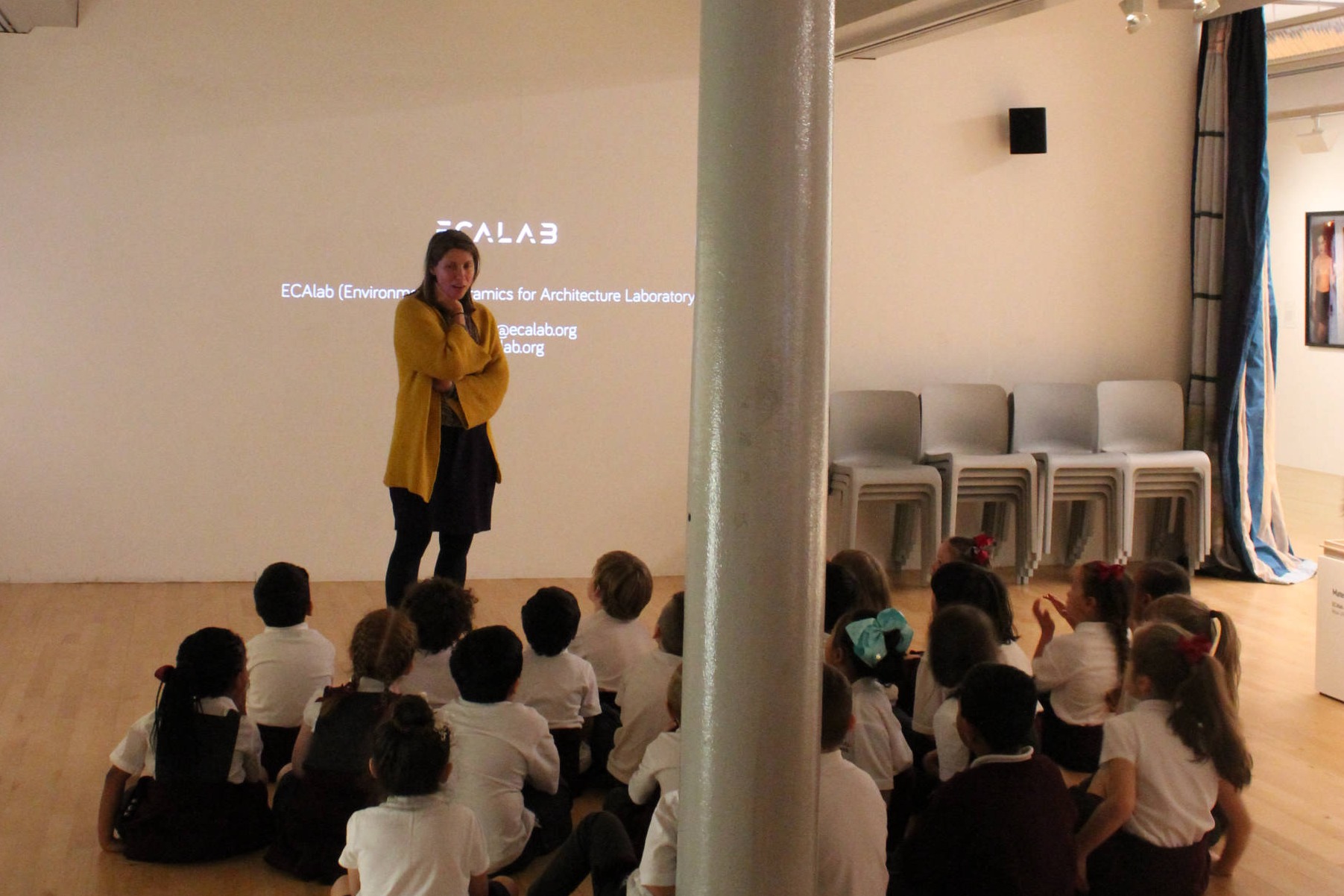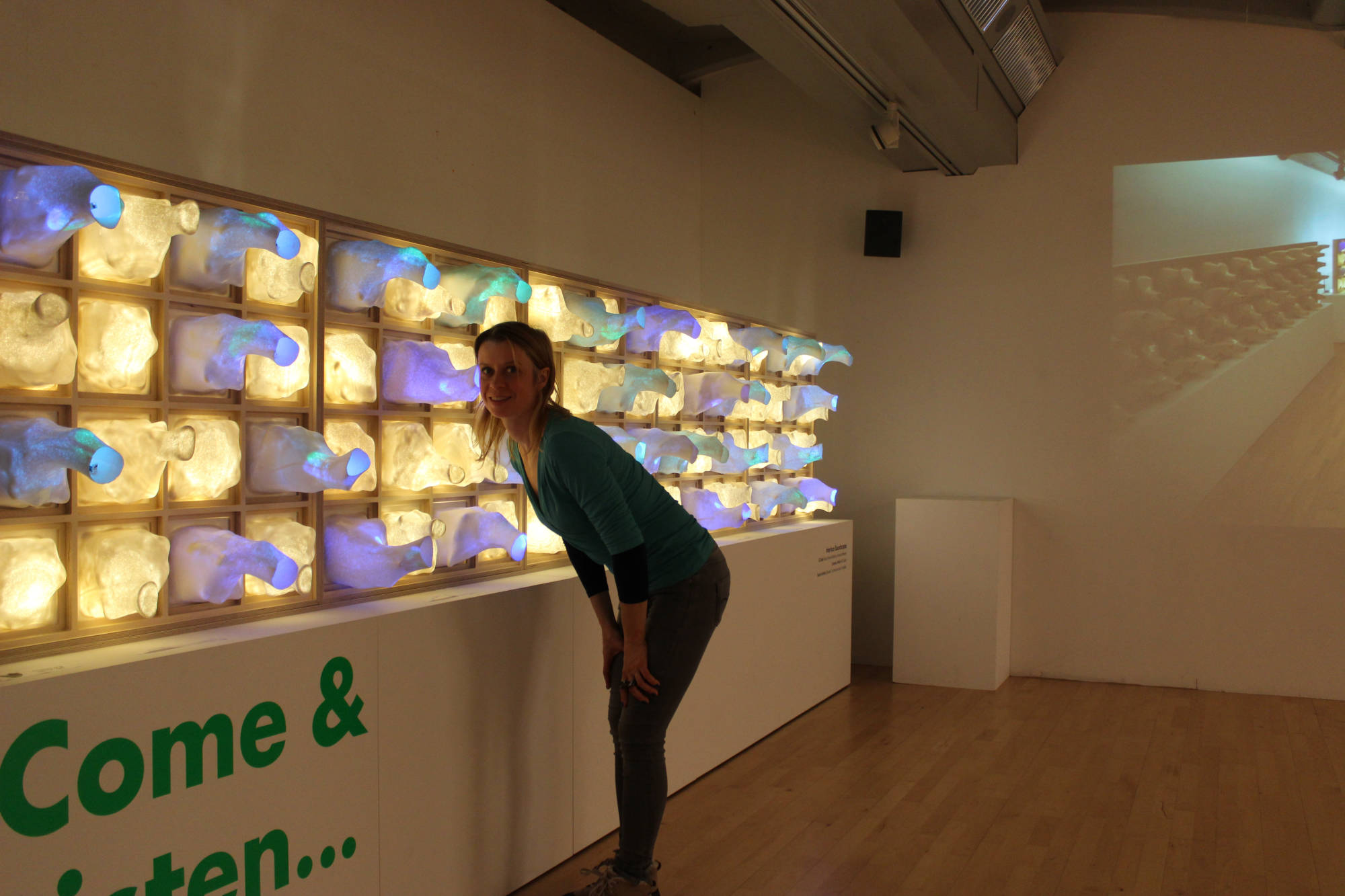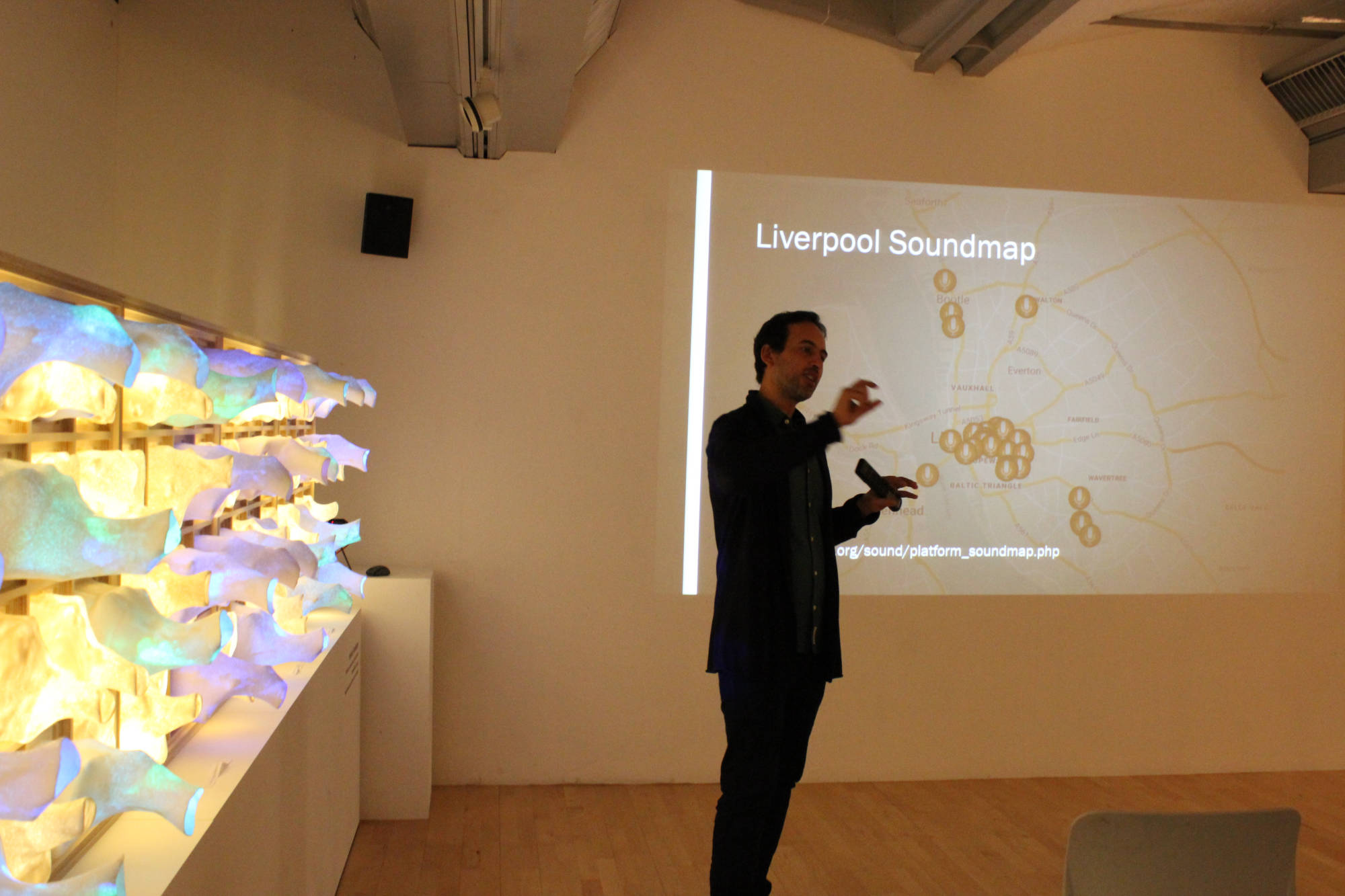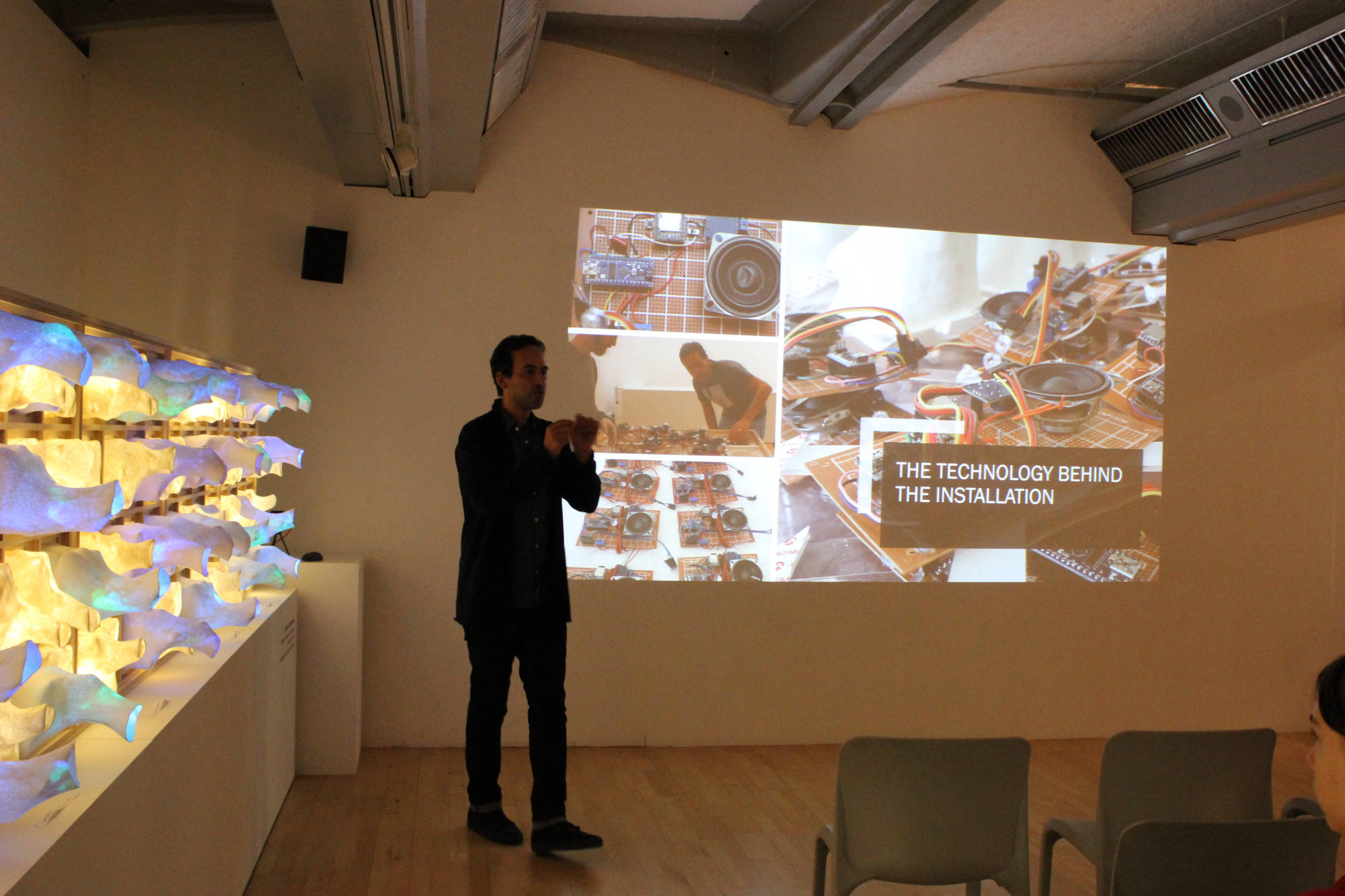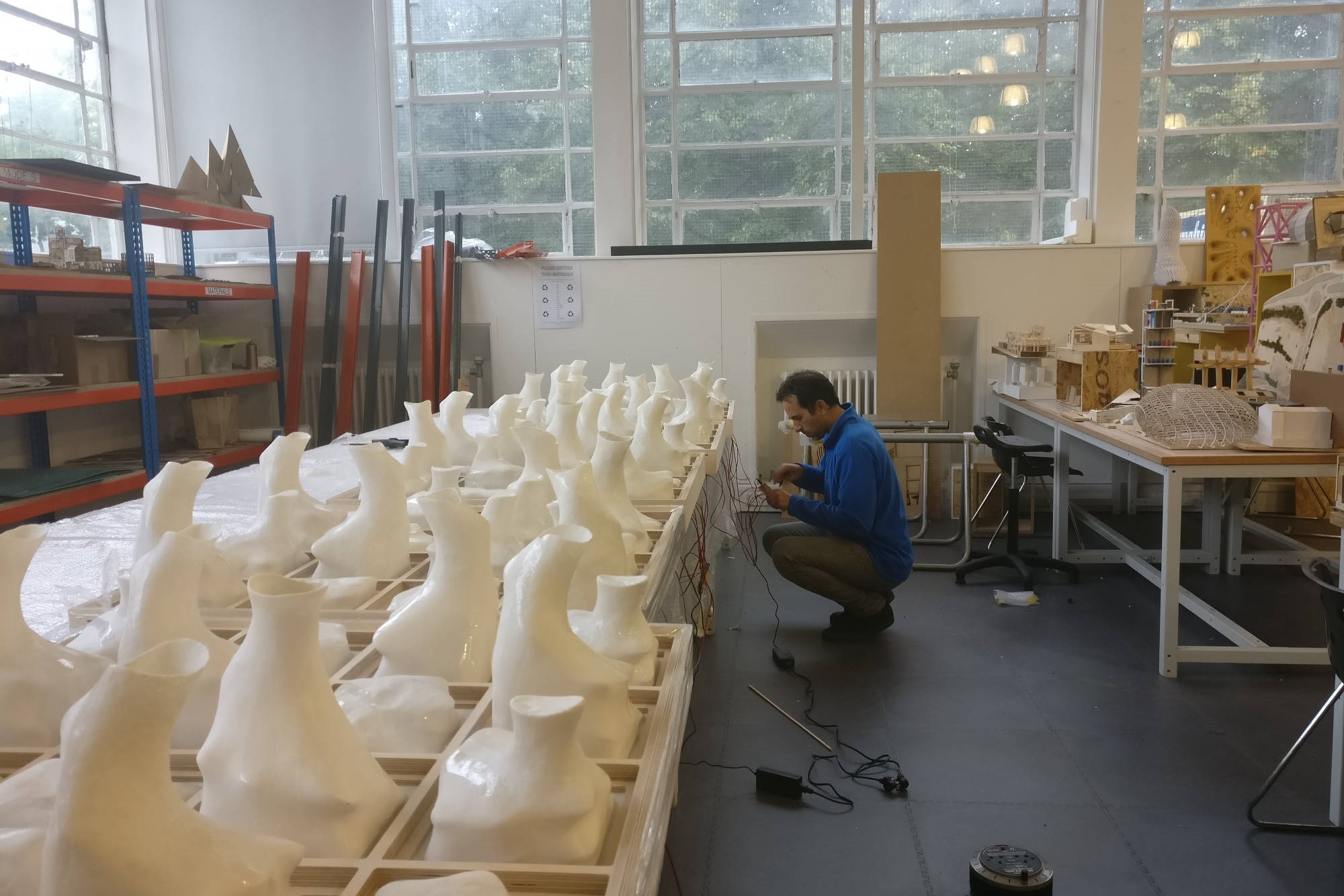
INTERFACING SOUDSCAPES
This ceramic surface allows visitors to connect and be transported to different locations in the city, through listening to characteristic soundscapes of Liverpool. These journeys stimulate the discovery and provoke an active reflection on the qualities of the acoustic environment that surrounds us in everyday life, often drowned out and dominated by visual stimulation. For this surface, ECALAB has generated three new ceramic sinuous shapes, with the aim to create acoustic resonators. The internal cavities of these shapes create a chamber, emulating seashells, as natural resonators capturing and retaining acoustic essences. This surface is created with 80 of the new ceramic earshells, forming a surface that is 90 cm high by 4.5 m long. 30 are active sonic and luminous chambers. Light attracts visitors’ attention to different unknown locations. By listening to the shells, visitors will intimately travel throughout the city. The electronic and sensorised construction allows visitors to impregnate the private and domestic space with urban and public qualities. Held against the light, the ceramics shells reveal their inner structure. This surface explores qualities of translucency in the clay using a new translucent material. The organically interwoven visual and auditory elements provide a new reading for the use of ceramics in architecture, as an unfathomable floating presence in the space.

COMPOSING TOPOLOGIES
This component of the exhibition explores the ceramic surface as a meta ‘musical’ instrument that allows visitors to embody the role of composers of their own environment. This surface consists of 80 engineered cones developed for ECALAB's previous exhibition Cerámica, forming a surface that is 90 cm high by 4.5 m long. Half of these cones are active sonic chambers used to reinterpret the ceramic surface by exploring its potential as an acoustic creator. By manually shaping the sounds created by each of the 40 performative cones, visitors can collectively (re)create new musical environments. Sound modulation is also connected to colour and light performance. When the visitor leaves, his/her own musical and luminous footprint will remain in the space, until the next visitor interacts with the ceramic surface. The ceramic cones have been optimised in real-time digital space to maximise light diffusion. Slip cast moulds, manufactured using file to factory techniques, are used to produce each white ceramic sinuous cone.

